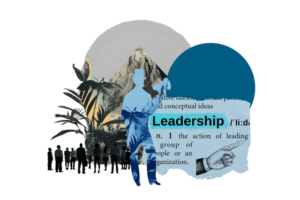If there’s anything that 2020 has taught us, it is to expect the unexpected.
The Covid-19 pandemic and Black Lives Matter movement both in the US and worldwide have forced companies to change their strategies, communications, diversity and inclusion policies.
Some companies moved fast, responding almost immediately to their customers and their employees’ needs. Others have fallen behind, missed the mark or have been paralyzed in, indecision for fear of getting it wrong.
From my Executive Business Coach perspective, the abrupt disruption was a wakeup call, especially for those sitting on corporate boards.
This is confirmed by many studies. For example, KPMG notes (2021) state how, in retrospect, in many cases company executives, were poorly prepared for such sudden changes. Uncertainties made them vulnerable.
The financial, social and psychological fallout was punitive for many companies like, Hertz and J.Crew, that filed for bankruptcy from a result of the pandemic.
In essence, this unprecedented situation, created enormous difficulties for the boards in carrying out adequately their role. As a response to this new situation, the introduction of a “Shadow Board” is a crucial element for modern business.
It constitutes an authentic source of ‘diverse thought’ so fundamental to sustainability, innovation, growth, and improvement of organizations, pushing deeper responsibility towards leadership.
So what is it about? The Shadow Board is a group of non-executive employees who work with executives on strategic initiatives. It has the explicit goal of harnessing the insights of younger generations to diversify the perspectives to which executives are exposed.
A study conducted in the pre-Covid period revealed that before 2019 only a few companies had established a Shadow Board in response to changing market conditions. The realities that have it, however, found themselves in a better position to understand the pressures that current working conditions place on workers, and thus better evolved and responded to the external context.
Furthermore, some organizations, precisely through the establishment of a Shadow Board, have addressed two seemingly unrelated problems that affect many companies: disengaged young workers and a weak response to changing market conditions.
Like Paolo Picasso said: “There is only one way to look at things until someone shows us how to look at them with different eyes”. Opening up to a different perspective, even opposite to one’s own, especially when it is more innovative and appropriate to the contemporary, allows to make better decisions: this is exactly how a Shadow Board works.
The inception of the Shadow Board has some characteristics of Reverse Mentoring, a practice that aims to build a partnership with a Senior executive for co-learning and mutual exchange. Quoting David Clutterbuck, ‘reverse mentoring’ is a practice that helps senior managers keep up with change: be it technological, approach, or perspective, drawing nourishment from the knowledge of more junior employees.
A historical example of ‘reverse mentoring’ comes from 1815 when Napoleon, during his exile in Sant’Elena, was “inspired” and even saved from suicide by fourteen-year-old Betsy Balcombe. Their relationship constituted a great source of learning for Napoleon. Thanks to the young woman’s stimulus, to her genuine questions, without preconceptions, the French emperor managed to acquire – awakening in himself – a detached attitude, which only the ingenuity of a young woman could teach him.
How does the Shadow Board work?
The concept of involving younger employees in shadow boards resonates very strongly with me because before becoming an Executive Coach, in my previous role as CEO of a financial institution (part of a larger multinational company), I myself had established what at the time I called ‘cross-divisional board’. In features, my ‘cross-divisional board’ was very similar to a Shadow Board, and all issues, improvements, and innovations were discussed and decided with its involvement. It was created exactly to ride the pace of change and innovation, by leveraging the insights of younger colleagues and by elaborating their different perspectives, and promoting trust and autonomy. It was certainly a relevant element in the constant growth and success we have enjoyed as a team for over 10 years, and it was one of the by-products of our corporate culture, which was based on the shared idea of ‘expanding one’s sphere of influence ‘: a culture in which everyone felt valued, involved and committed.
I was, therefore, able to observe with my own eyes the benefits that Boards of this type can bring to organizations, at both an individual and organizational level. And this is confirmed by research: the Shadow Board concept works! The article by Jennifer Jordan and Michael Sorell Why You Should Create a “Shadow Board” of Younger Employees, for example, presents some cases of companies that have set up a Shadow Board, showing the tangible benefits.
Two prime examples worth mentioning are Prada and Gucci, two Italian companies. In 2017 Prada admitted that the cause of the significant decline in sales suffered in 2014 was traceable to the company’s inability to evolve with the external context. Co-CEO Patrizio Bertelli said he made the mistake of being slow “in understanding the importance of digital channels and the ‘influencers’ and online bloggers who were disrupting the industry.” In the same period, under the direction of CEO Marco Bizzarri, Gucci has created a Shadow Board made up of Millennials who, since 2015, have met regularly with the senior team.
The Shadow Board includes the company’s brightest young talents from different functions. The significant aspect is that sales have since grown by as much as 136% – growth was driven largely by the success of online and digital strategies.
According to Jennifer Jordan and Michael Sorell the Shadow Boards specifically help:
• To reinvent business models. AccorHotels was able to create a brand dedicated to Millennials thanks to the establishment of a Shadow Board: according to Balson, the company’s chief talent and culture officer, it was successful in part because the members were able to develop a more independent view of all internal and cost constraints and thus to develop a more effective idea for the target in question.
• To redesign processes. Stora Enso, a Finnish paper and packaging company, used its Shadow Board to review how the executive committee assigned different assignments. The idea was to start assigning tasks to non-experts: their more impartial vision increased the possibility of discovering and developing alternative solutions.
• In organizational transformation. GroupM India has established or YCO (Youth Committee), with the aim of implementing a digital transformation of the company, with a view to growth and development. The digitization of contracts, for example, has strengthened the GroupM ecosystem by increasing the number and improving the nature of partnerships with media owners, data providers, consultants, auditors, and start-ups, while developing a social media platform that facilitated conversations and relationships between management and lower-level employees across agencies.
• To give greater visibility to Millennials. The research also suggests that Millennials want more visibility and autonomy, which the Shadow Boards offer: this helps to make them participate and motivated, to create the conditions for them to fully express their potential and thus create value for the organization.
How to Create a Successful Shadow Board?
To be truly successful, organizations developing a Shadow Board must not only seek to challenge but must also allow being challenged by change, ready to take on leadership responsibilities, and be held accountable when appropriate and necessary.
In order to be effective, senior leadership must train empathy and listening, engage in an attitude of openness to the new and diverse, and fully empower and guide part of the responsibility towards future leaders.
Only then can organizations move away from a system where information flows only in one direction, to a robust structure of multidirectional systemic listening and learning.
Some crucial steps in creating a successful shadow board are:
• Define the purpose of the shadow board: why does it exist, what kind of knowledge should it produce for the official executive board?
• Share common rules for how to communicate effectively amongst the boards and better understand each other.
• Create opportunities for sharing and give yourself enough time to create real contact between the interlocutors.
• Define a clear time schedule of program duration.
For the success of a shadow board program, it is essential to help all interlocutors to train their soft skills that facilitate cooperation between the two boards. Important soft skills to display active listening oriented to understand the other and to welcome him/her with his/her diversity. Suspension of judgment and an attitude of openness are indispensable, accepting each other’s point of view and valuing the contribution that everyone brings, by freeing oneself from prejudices and one’s own consolidated certainties in order to open up to dialog.
Know how to be in an authentic dialog and develop the ability to ask open and powerful questions, guided by a genuine curiosity to broaden one’s vision and collaborate for a common solution.
In general, it becomes crucial to train for a ‘learning mindset’ to make room for the new, to orientate towards mutual learning, regardless of origin, gender, age, experience, etc.
The real and constructive inclusion of everyone plus the collaboration between the two boards leads to the development of truly innovative, brilliant strategies, appropriate to the contemporary context and market.
Check it out! I hope I have inspired you, in this post-Covid phase, to think about how you and your company could use a Shadow Board to get new and fresh ideas, test strategies, and generally better engage others.






